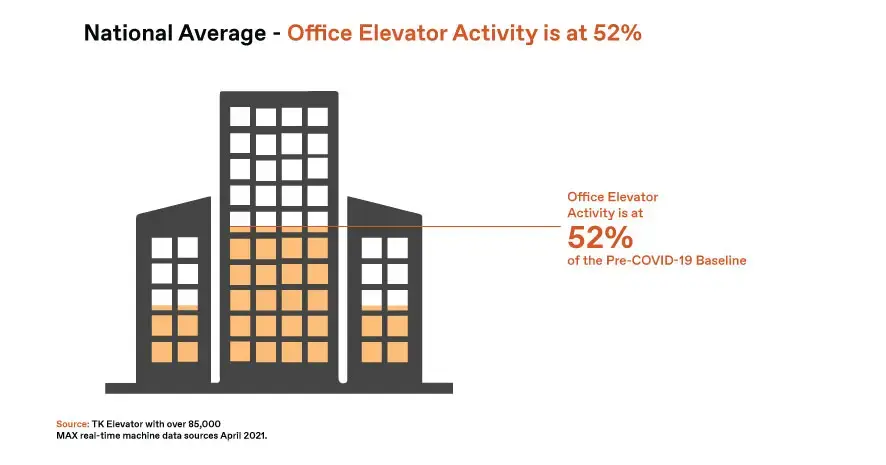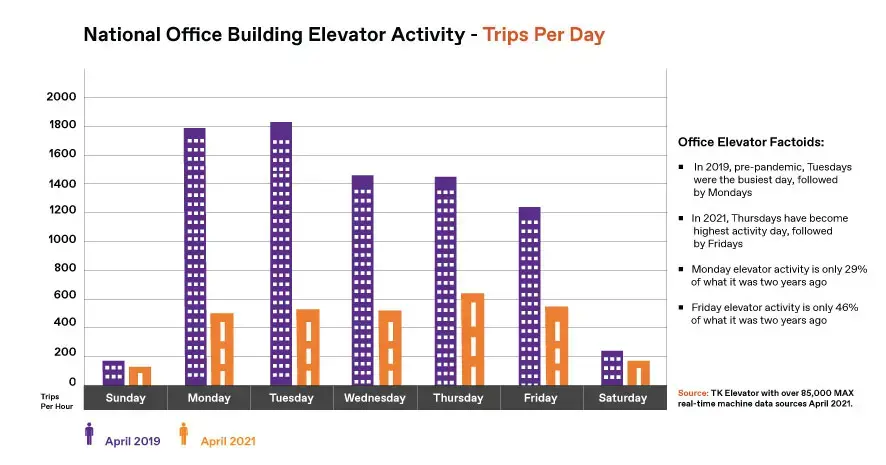How is this Hybrid Office Situation Working?
Only a few years ago, “hybrid” seemed to be a term mostly reserved for genetically-modified seeds and cars. But as recent elevator activity data shows, “hybrid” can also describe our changing relationship with office work.
In April 2021, according to the TK Elevator Index powered by MAX, the national average of elevator activity in office buildings was at 52% of our pre-COVID-19 baseline. Along with reduced office activity, we’re seeing very interesting new patterns on which days we’re coming into the office — if we’re coming at all.

What’s a hybrid work arrangement?
It’s generally defined as having flexibility on which days we work in a physical, communal office versus days worked from home. This isn’t necessarily new, but it’s been widely embraced post-pandemic as many employees and employers recognize the quality of life and economic benefits from minimizing commutes and reducing costs of running an office five days per week.
Surprisingly, as our data reveals, the emerging hybrid work schedule might be changing the most popular day to go into the office. In 2019, pre-pandemic, Tuesdays were the most popular office day followed by Mondays.
Now in 2021, Thursdays have become highest activity day followed by Fridays. Anecdotally, we’ve been hearing that Thursday is the new “in-person meetings” day. Face-to-face collaboration may indeed be the main driver of office activity as many have theorized in the digital age.

We should be careful not to read too much into Fridays being a more popular workday than Mondays. There is only a minimial difference in activity levels between Mondays and Fridays in 2021.
The bigger story is Friday elevator activity in office buildings is sharply lower than two years ago, at 46% of 2019 levels. An even larger drop-off can be seen on Mondays with 2021 volumes at only 29% of 2019 levels. It seems that post-pandemic, less people want to deal with the Monday morning blues at the office!
New ways to work
As TK Elevator data reveals, we’re all finding new ways to work in 2021. It’s clear that employees are demonstrating an increased flexibility in where and when they work. This has very significant impacts in how offices and even cities will function for many years to come.
 United States
United States

